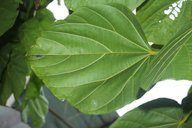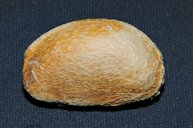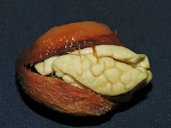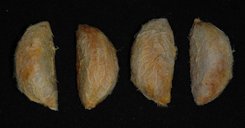| Chupa-Chupa - Matisia cordata | |||||||||||||||
|---|---|---|---|---|---|---|---|---|---|---|---|---|---|---|---|
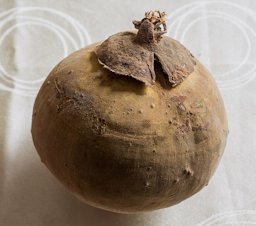 Fig. 1 Frucht von Matisia (or Quararibea) cordata (zapote) in Ecuador 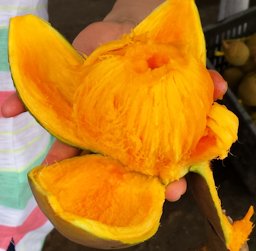 Fig. 2  Un zapote (M. cordata) abierto, Meta, Colombia 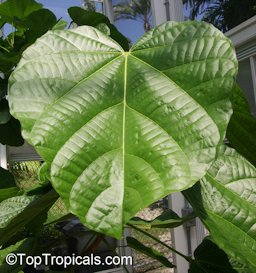 Fig. 3 Chupa-chupa, Q. cordata 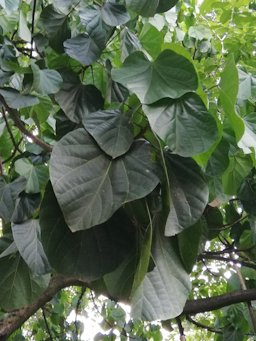 Fig. 4  M. cordata, Medellín, Antioquia, Colombia 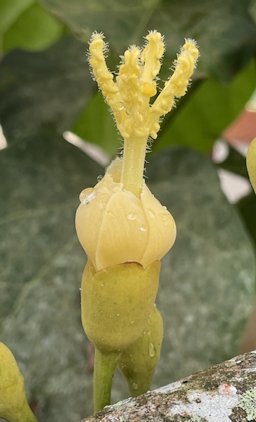 Fig. 7  M. cordata, Moyobamba, Departamento de San Martín, Peru 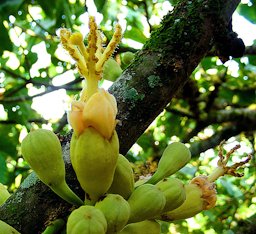 Fig. 8  M.(or Q.) cordata, a zapote flower 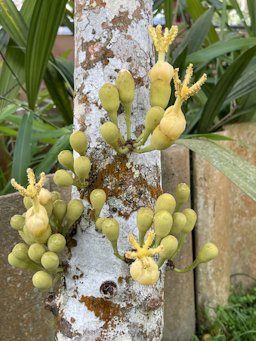 Fig. 9  M. cordata, Moyobamba, Departamento de San Martín, Peru 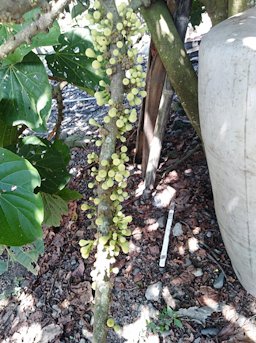 Fig. 10  M. cordata, Narino, Colombia 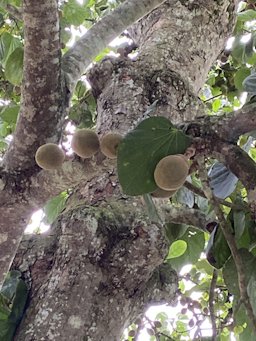 Fig. 11  M. cordata, Quininde, Esmeraldas, Ecuador 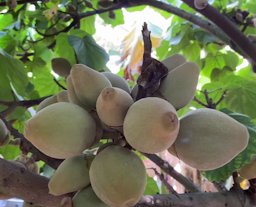 Fig. 12  Cluster of immature fruit 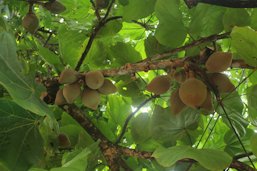 Fig. 13  M. cordata, Guamal, Meta, Colombia 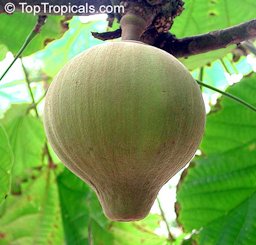 Fig. 14 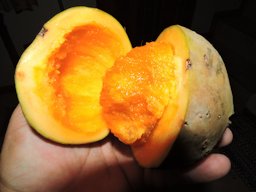 Fig. 15 Q. cordata (cultivado) 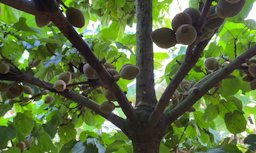 Fig. 19  Branches appear in groups of five equidistantly spaced around the trunk in the same plane 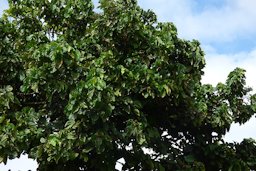 Fig. 20  Zapote (M. cordata) Colombia 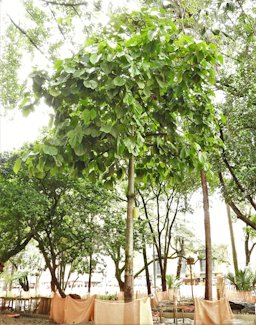 Fig. 21  M. cordata, Medellín, Antioquia, Colombia 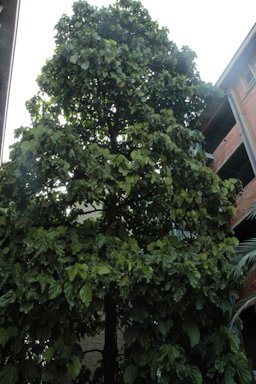 Fig. 22  M. cordata, Medellín, Antioquia, Colombia 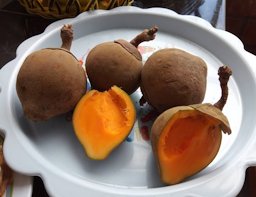 Fig. 23  M. cordata Bonpl., mature fruits, Oxapampa, Perú 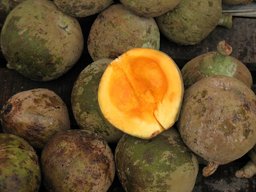 Fig. 24  South American sapote, chupa; Q. cordata, Otavalo market, Ecuador 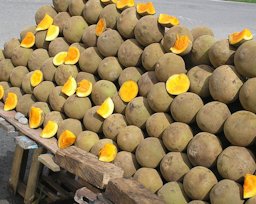 Fig. 25  Q. cordata (zapotes) amontonados para su venta |
Scientific
name Matisia cordata Bonpl. Common names English: chupa-chupa, matisia, sapote Columbiana, South American sapote; Brazil: sapota, sapote-do-Peru, sapota-do-Solimóes (Portuguese); Columbia: chupa-chupa, zapote amarillo, zapote, zapote chuchupa, zapote chupachupa, zapote chupa, sapote de monte, sapotillo; Ecuador: sapote, zapote; French: sapote du Pérou; Peru: sapote de monte, sapotillo, zapote de monte, zapote chupachupa, zapote chupa; Spanish: firolisto, chupa-chupa, mamey Colorado, zapote de Monte, sapote, sapote de monte, sapotillo, zapote, zapote De monte 2 Synonyms Quararibea cordata (Bonpl.) Vischer, Q. cordata (Bonpl.) García-Barr. & Hern.Cam. 1 Family Malvaceae (mallow family) formerly Bombaceae Origin Central and western Amazonia (Colombia to Peru) 1,12 USDA hardiness zones 10-12 7 Uses Food; ornamental; pioneer species within it's natural range Height 40 ft (12 m) in cultivation; 130-145 ft (40-45 m) in the wild 3 Crown Heavy canopy of stiff branches with large leaves clustered in rosettes 7 Plant habit Erect; large tree; much branched; pagoda form 2,3,6 Growth rate Fast-growing 3,6 Trunk/bark/branches Sometimes buttressed; stiff branches in tiered whorls of 5; grey-brown rugose trunk; copious gummy yellow latex 2,3,4 Pruning requirement Required for maintaining ease of harvest Leaves Semi-deciduous; alternate; long-petioled; clustered in whorls near the ends of the branches; membranous; glabrous; seven-nerves arising from the base 2,3 Flowers Short-stalked; cauliflorous; yellowish-white or rose-tinted; 5-petalled flowers; borne in masses along the lesser branches and trunk; bloom Jan., Feb. 3,6 Fruit Berry; oval, ovoid to elliptic; orangey-yellow, fleshy pulp; thick rind; soft; juicy, sweet; two to five hard seed; long fibres 2 Season Nov. 3 Light requirement Full sun Soil tolerances Requires good, well-drained soils, rich in organic matter; tolerates the dry, oolitic limestone of South Florida with proper fertilization 6 pH preference Not demanding but slightly acid conditions are preferred 4 Drought tolerance Does not tolerate drought 6 Soil salt tolerance Moderate 7 Cold tolerance No frost tolerance Roots Most roots are shallow with only a few deeper ones providing anchorage 4 Invasive potential * None reported Pest resistance Susceptible to white flies Known hazard None known Reading Material Chupa-Chupa, Fruits of Warm Climates Origin The tree grows wild in lowland rainforests of Peru, Ecuador and adjacent areas of Brazil, especially around the mouth of the Javari River. It is common in the western part of Amazonia, southwestern Venezuela, and in the Cauca and Magdalena Valleys of Colombia. 3 Matisia was introduced and cultivated elsewhere in the tropics e.g. in south Florida and North Queensland, Australia. 2 The South American sapote (Quararibea cordata Visch.) was introduced into South Florida from the Amazon Basin in 1964. The first crop of large "top-shaped", orange-fleshed fruit appeared nine years later. This medium-size ornamental tree, with big bold attractive "lollipop" shaped leaves, appears adapted to our warmer areas where several specimens now fruit regularly. It is thought that this interesting fruit from South America warrants further planting, both for the beauty of the tree and the quality of the sweet mango-melonlike flavored fruit. 9 Taxonomy Bombacaceae is no longer recognized at the rank of family but as a subfamily (Bombacoideae) within the family Malvaceae. The family Malvaceae has nine subfamilies; in the subfamily Bombacoideae is the genus Quararibea with 98 species. 6 Description The South American sapote (Quararibea cordata Humb. & Bonpl., Vischer) is not a relative of the other sapotes. Some authors have referred to it as “South American sapote” or “chupa-chupa”, the name used in Colombia and Peru. The tree is very fast-growing and the canopy is open with a pagoda form, with five branches appearing in several whorls along the main stem. The stem is fairly straight and can be devoid of branches for over half of its length. The foliage is dense, semi-deciduous and concentrates at the end of the branches with almost no foliage inside the canopy. 6 The appearance of the fruit is appealing, with an olive-colored skin that is slightly velvety to the touch. The fruit is juicy, similar in taste to mango, and also slightly fibrous. 12 The sapote has a symmetrical, full leaved form (Fig. 22) that makes a large ornamental for gardens or parks. 5 The fruit pulp is popular in the Amazon Region, where the fruits are commercialized and the tree grown in home gardens. 10 Zapote exhibits allelopathic activity with surrounding plants. 4
Tree There are no limbs for the first eight feet then branches appear in groups of five equidistantly spaced around the trunk in the same plane (Fig. 22). These radiate out and ascend at varying angles of inclination from nearly horizontal to about 60 degrees. This branching pattern is repeated at four to five foot intervals with bare trunk in between. 9 Leaves The semi-deciduous, alternate, long-petioled leaves, clustered in rosettes near the ends of the branches are broadly heart-shaped, normally 6 to 12 in. (15-30 cm) long and nearly as wide. 3 They have many prominent palmate veins. 4
Fig. 5. M. cordata, Guamal, Meta, Colombia Fig. 6. M. cordata, Valle del Cauca, Columbia Flowers Flowers occur in fascicles of three, pale rose coloured, short pedicelled, 1 in. (2.5 cm) wide, with two or three bracts near base; calyx is two to five-lobed and tomentose; corolla is sub-bilabiate, with two petals a little smaller than the other three, all obovate; stamen tube with five linear lobes with about 12 anthers on each lobe; style shorter than stamens, puberulent; ovary five-angled and stigma five-sulcate and capitate. 2 The cauliflorous flowers are most curious and resemble living coral; they are tiny and formed in random masses on the limbs; creamy or yellowish, they have 5 little cupped petals, which clasp bizarre, oversized, 5-fingered, 'hairy' stamens centred by a pistil (Fig. 7). 7 Flowers open during the night and are receptive the following day. The species is mainly self-incompatible with only 10-15% of trees capable of independently setting fruit. 4 Pollination The flowers are pollinated by hummingbirds, bees, wasps and bats. In the afternoon some trees become self-compatible. 3 Fruit The fruit is rounded, ovoid or elliptic with a prominent, rounded knob at the apex and is capped with a 2- to 5-lobed, velvety, leathery, strongly persistent calyx at the base; 4 to 5 3/4 in (10-14.5 cm) long and to 3 3/16 in (8 cm) wide, and may weigh as much as 28 oz (800 g). The rind is thick, leathery, greenish-brown, and downy. The flesh, orange-yellow, soft, juicy, sweet and of agreeable flavor surrounds 2 to 5 seeds, to 1 1/2 in (4 cm) long and 1 in (2.5 cm) wide, from which long fibers extend through the flesh. 3 The flavour is reminiscent of a very sweet pumpkin with overtones of mango and apricot. Opinions vary widely over the quality of this fruit, with some people describing it enthusiastically as like a blend of mangoes, peaches and strawberries, whilst others have found it to be bland. There are forms with very little fibre and these can be utilised for juice. 7,8 The fruit has five sections and each one has a seed except when some abort leaving only the seed coat in the pulp. It takes about 240 days from anthesis to fruit ripening in the tropics, and up to 270-300 days in the subtropics. 6 They’re ready to be picked when the calyx lifts slightly and reveals a light coloured ring running round its periphery. Don’t wait for them to fall as they’re way past ripe by then. 4
Varieties Some of the fruits borne in Florida appear to be of better than average quality. In northern Peru, there is reportedly a type with little fiber and superior flavor. 3 Harvesting The fruit will stay on the tree until it rots. It must be harvested with a knife or a long cutting-pole. Light color around the edge of the calyx is a sign of ripeness (Fig. 1). Whitman's tree bore 58 fruits in 1976. A normal crop may be 3,000. One tree in Tefé, Brazil, produced an estimated crop of 6,000 or more fruits in a season. 3 A mature tree can produce 300-1000 fruit given suitable pollination and management, but alternate bearing can be a problem. They can be stored for about 2 weeks at room temperature. 4 Climate The chupa-chupa is a tropical to subtropical species. In Ecuador, it ranges from sea-level to 4,000 or even 6,500 ft (1,200-2,000 m). In Florida, young trees need protection from winter cold. For best performance, the tree needs full sun and plenty of moisture. 3 Propagation The tree is commonly grown from seed but superior types should be vegetatively propagated. Side-veneer grafting can be easily done. Budding is not feasible. 3 80% of seeds will germinate if sown immediately upon removal from the fruit, the seed sprouting within 20-30 days. 5,10 With good conditions the plants grow rapidly and have a juvenility period of 5-7 years. There may be one or more seasons when maturing trees produce flowers only before progressing to set fruit. 4 Planting The tree attains maximum dimensions in the low, wet, deep soils of South American forests, yet it does well in cultivation on the slopes of the Andes and seems to tolerate the dry, oolitic limestone of South Florida's coastal ridge when enriched with topsoil and fertilizer. 3 Pruning Normal management of removing any dead wood and it may be necessary to limit tree size. Skirting is usually not necessary as there is commonly a substantial trunk before the first tier of branches. 4 No published results are known but it will probably benefit from topping the small trees to induce low whorls of scaffold branches and prevent the tree from becoming too tall and devoid of lateral branches on the lower stem. In later years, topping of long branches and elimination of undesirable material that is damaged or diseased or growing in the wrong direction would be advisable. 6 Fertilizing Little experience exists. Liming could be important in acid soils. 6 Irrigation The tree is normally grown in areas with plenty of rainfall. In places with a dry period of more than 1–2 months, it is advisable to irrigate. 6 Pests/Diseases The tree is subject to attack by the Keys White Fly (Aleurodicus dispursus) and the Cuban May Beetle (Phyllophaga bruneri), a scarab beetle that has been known to strip it of foliage. 9 Food Uses This is a fruit that has always been eaten fresh out-of-hand, although it may be juiced. In general, sapote has very low nutritional value, but the carotene content is relatively high. 11 The pulp of the fresh fruit is juicy, though somewhat fibrous. A juice or nectar can be made from this pulp also. Some experiments with jam and jelly making have not given good results. 5 Medicinal The deep orange color of the pulp indicates that the fruit is a good source of vitamin A; indeed, carotene levels of 2,400 µg per 100 g of pulp have been recorded for the fruit. 12 Other Uses The wood is coarse-textured, irregular-grained, light in weight, with a low resistance to wood-eating organisms. It is easy to cut, but has poor mechanical properties. It is used as core material for doors and panelling, and to make light boxes. 10 General In the upper Tahuayo (Peru), for example, the large trees are grown in association with avocados (Persea americana). This combination works well because both species have the same soil requirements. 11 List of Growers and Vendors |
||||||||||||||
| Bibliography 1 "Quararibea cordata (Bonpl.) Vischer." The World Flora Online, WFO (2022), (CC0 1.0), www.worldfloraonline.org/taxon/wfo-0000733268. Accessed on: 17 Feb. 2022. 2 Lim, T. K. "Edible medicinal and non-medicinal plants, Fruits, vol. 1." ZLibrary, 2012, 1lib.us/book/1310933/1bdc97. Accessed 14 Feb. 2022. 3 Fruits of Warm Climates. Julia F. Morton. Miami, 1987. 4 "Chupa-chupa, South American Sapote, Zapote, Matisia (Quararibea) cordata." The Rare Fruit Club WA, rarefruitclub.org.au/Chupa-chupa.htm. Accessed 15 Feb. 2022. 5 "Food and Fruit bearing forest spedies: Examples from Latin America." FAO Forestry paper 44/3, Food And Agriculture Organization of the United Nations, 1986, FAO, www.fao.org/3/ap368e/ap368e00.pdf. Accessed 16 Feb. 2022. 6 Duarte, Odilo and Robert E. Paull. Exotic Fruits and Nuts of the New World. Cambridge, CABI, 2015. 7 Facciola. S. Cornucopia II A Source Book of Edible Plants. Vista, Kampong Publications, 1998. 8 Barwick, Margaret. Tropical & Subtropical Trees. A Worldwide Encyclopaedic Guide. London, 2004. 9 Whitman, William F. "South American Sapote." Proceedings of the Florida State Horticultural Society, 89:226-227, 1976, journals.flvc.org/fshs/article/view/97815/93817. Accessed 18 Feb. 2022. 10 Lorenzi, Harri. Brazilian Trees, A Guide to the Identification and Cultivation of Brazilian Native Trees. Vol. 3. Nova Odessa, Instituto Plantarum de Estudos da Flora, 2009. 11 The Encyclopedia of Fruit & Nuts. Edited by Jules Janick and Robert E. Paull, Cambridge, CABI, 2008. 12 Smith, Nigel, et al. Amazon River Fruits, Flavors for Conservation. Lima, Peru, Missouri Botanical Garden Press, 2007. Video v1 Oswald, Stuart. "Discovering the South American Sapote (Chupa-chupa) fruit of Colombia." Stuart Oswald, 25 Mar. 2017, (CC0), www.youtube.com/watch?v=-V6UFxJUTg4. Accessed 24 Feb. 2022. Photographs Fig. 1 Wambra. "Frucht von Matisia cordata (Zapote) in Ecuador." Wikimedia Commons, 5 Feb. 2018, (CC BY-SA 4.0), Image cropped, commons.wikimedia.org/wiki/Category:Matisia_cordata#/media/File:Matisia_cordata.jpg. Accessed 17 Feb. 2022. Fig. 2 Xemenendura. "Un zapote (Matisia cordata) abierto, Meta, Colombia." Wikimedia Commons, 3 Aug. 2014, (CC BY-SA 3.0), Image cropped, commons.wikimedia.org/wiki/Category:Matisia_cordata#/media/File:Zapote_fruta.jpg. Accessed 17 Feb. 2022. Fig. 3 "Quararibea cordata - Chupa-chupa." Top Tropicals, 2005, toptropicals.com/pics/garden/m2/2005/0/PICT0382Quararibea_cordata_TA.jpg. Accessed 15 Feb. 2022. Fig. 4 nyctibius. "Matisia cordata, Medellín, Antioquia, Colombia." iNaturalist, Research Grade, 2 May 2019, (CC BY-NC 4.0), www.inaturalist.org/observations/24401589. Accessed 19 Feb. 2022. Fig. 6 Victoria, Leiner Jair. "Matisia cordata, Valle del Cauca, Columbia." iNaturalist, Research Grade, 20 Oct. 2020, (CC BY-NC 4.0), www.inaturalist.org/observations/63116704. Accessed 19 Feb. 2022. Fig. 7,9 manimiranda. "Matisia cordata, Moyobamba, Departamento de San Martín, Peru." iNaturalist, Research Grade, 30 Aug. 2021, (CC BY-NC 4.0), www.inaturalist.org/observations/93008706. Accessed 19 Feb. 2022. Fig. 8 Culbert, Dick. "Matisia (or Quararibea) cordata, a Zapote flower. The fruit is known as Zapote Chupachupa. It is native to Colombia and the northwestern Amazon basin, but has been planted widely. Central Colombia." Wikimedia Commons, via Flickr, 23 Sept., 2013, (CC BY 2.0), commons.wikimedia.org/wiki/Category:Matisia_cordata#/media/File:Matisia_cordata,_a_Zapote_flower_(9906056734).jpg. Accessed 17 Feb. 2022. Fig. 10 Gonzalez Quiroz, Karla. "Matisia cordata, Narino, Colombia." iNaturalist, Research Grade, 27 Dec. 2020, (CC BY-NC 4.0), www.inaturalist.org/observations/67140072. Accessed 19 Feb. 2022. Fig. 11 vanessadavalosr. "Matisia cordata, Quininde, Esmeraldas, Ecuador." iNaturalist, Research Grade, 3 Apr. 2021, (CC BY-NC 4.0), www.inaturalist.org/observations/72847589. Accessed 19 Feb. 2022. Fig. 12,19 "Chupa Chupa, Quararibea cordata: A Look At The Fruit, Flowers and Tree." Garden Florida, 21 June 2021, (CC0), Images cropped, www.youtube.com/watch?v=-6v-qk70EW0. Accessed 23 Feb. 2022. Fig. 13 Apipa. "Matisia cordata, Guamal, Meta, Colombia." iNaturalist, Research Grade, 15 Aug. 2021, (CC BY-NC 4.0), www.inaturalist.org/observations/91261468. Accessed 19 Feb. 2022. Fig. 14 "Quararibea cordata - Chupa-chupa." Top Tropicals, toptropicals.com/pics/garden/05/fruit/2046.jpg. Accessed 15 Feb. 2022. Fig. 15 Aguilar, Reinaldo. "Quararibea cordata (Bonpl.) Vischer (cultivado)." Vascular Plants of the Osa Peninsula, Costa Rica, 15 Aug. 2014, (CC BY-NC-SA 2.0), Flickr, www.flickr.com/photos/plantaspeninsulaosa/14777278237/in/photostream/. Accessed 19 Feb. 2022. Fig. 16 Aguilar, Reinaldo. "Quararibea cordata (Bonpl.) Vischer (cultivado)." Vascular Plants of the Osa Peninsula, Costa Rica, 18 Aug. 2014, (CC BY-NC-SA 2.0), Image cropped, Flickr, www.flickr.com/photos/plantaspeninsulaosa/14777139209/in/photostream/. Accessed 18 Feb. 2022. Fig. 17 Aguilar, Reinaldo. "Quararibea cordata (Bonpl.) Vischer (cultivado)." Vascular Plants of the Osa Peninsula, Costa Rica, 18 Aug. 2014, (CC BY-NC-SA 2.0), Image cropped, Flickr, www.flickr.com/photos/plantaspeninsulaosa/14777214768/in/photostream/. Accessed 18 Feb. 2022. Fig. 18 Paine, Thimothy, C. E. "Matisia cordata Bonpl., Madre de Dios, Peru." Neotropical Plant Portal, 2022, via Flickr, (CC BY-NC 2.0), serv.biokic.asu.edu/neotrop/plantae/taxa/index.php?taxauthid=1&taxon=19376&clid=1014. Accessed 23 Feb. 2022. Fig. 20 Tamayo, Alejandro Bayer. "Zapote (Mastisia cordata)." Wikimedia Commons, 11 June 2014, (CC BY-SA 3.0), commons.wikimedia.org/wiki/File:Zapote_(Mastisia_cordata)_(14222001128).jpg. Accessed 17 Feb. 2022. Fig. 21 Giraldo, Gabriel Camilo Jaramillo. "Matisia cordata, Medellín, Antioquia, Colombia." iNaturalist, Research Grade, 9 June 2019, (CC BY-NC 4.0), www.inaturalist.org/observations/26706314. Accessed 19 Feb. 2022. Fig. 22 daavendanm. "Matisia cordata, Medellín, Antioquia, Colombia." iNaturalist, Research Grade, 14 May 2021, (CC BY-NC 4.0), www.inaturalist.org/observations/78675669. Accessed 19 Feb. 2022. Fig. 23 Fuentes, Alfredo F. "Matisia cordata Bonpl., mature fruits, Oxapampa, Perú." Tropicos®, (CC BY-NC-SA 3.0), Image cropped, legacy.tropicos.org/Image/100807054. Accessed 17 Feb. 2022. Fig. 24 Vilseskogen. "South American sapote, chupa; Quararibea cordata, Otavalo market, Ecuador." Flickr, 26 Jan. 2008, (CC BY-NC 2.0), Flickr, www.flickr.com/photos/vilseskogen/2670323521/in/photostream/. Accessed 18 Feb. 2022. Fig. 25 Hiperion93. "Quararibea cordata (zapotes) amontonados para su venta." Wikimedia Commons, 14 Apr. 2006, Public Domain, Image cropped, commons.wikimedia.org/wiki/Category:Matisia_cordata#/media/File:Zapote_fruta.jpg. Accessed 17 Feb. 2022. * UF/IFAS Assessment of Non-native Plants in Florida's Natural Areas ** Information provided is not intended to be used as a guide for treatment of medical conditions. Published 29 Mar. 2022 LR |
|||||||||||||||
